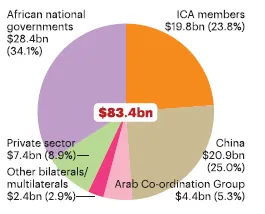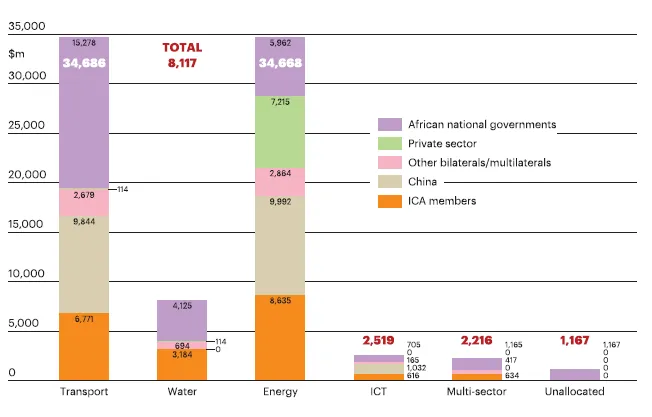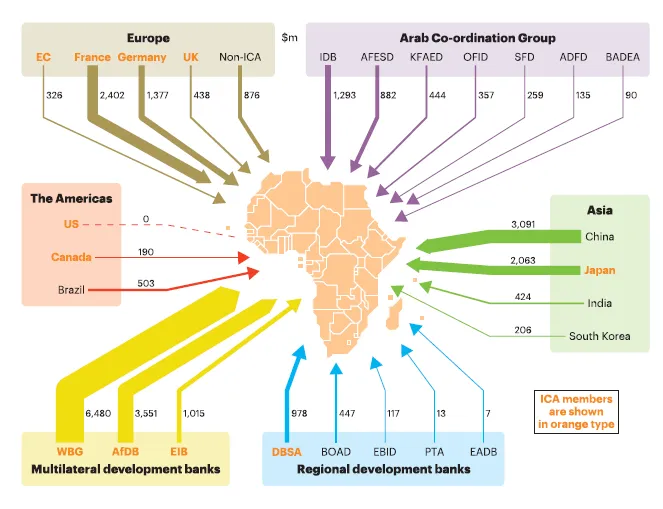By the end of last week's series of five posts on African infrastructure development (you can find a list of the full series at the end of this post), a number of you had started to ask more pointed questions about how African infrastructure is funded and who funds it. In other words, since we know money doesn't grow on trees, where does it come from?

Today's post, delivered to you from Lusaka, Zambia, where the jacaranda trees are in full bloom, will be about who has been funding infrastructure - how is a much more complex question we might not get to in this series.
A snapshot of infrastructure funding in Africa in 2015
The graphs I'll show you today all come from the Infrastructure Consortium for Africa's 2014 and 2015 annual reports.
This first graph breaks down the total US$83.4bn financing in 2015 by source of finance.

What is strikingly welcome about this is that the greatest contributor to financing Africa's infrastructure in 2015 was African governments themselves. A few other notable observations: China is the next biggest financier of African infrastructure (and we see this particularly in transport and logistics linkages such as railways and ports, connecting resource-rich areas to global markets), the traditional financiers in the ICA are coming in third and there is a welcome contribution from the private sector at US$7.4bn.
This next graph breaks down the contributions by source into sectors and source. That US$7.2bn private sector investment? It went into energy projects.

The transport and energy sectors attracted the lion's share of financing in 2015, and it is perhaps interesting to note that while transport and energy attracted similar levels of financing, African governments covered the entirety of transport finance in that year while the private sector stood in for about 55% of finance for energy sector investments.
A quick comparison with 2014
Now, compare this with 2014 finance, which totalled US$74.5bn:

It's worth noting the jump in funding for energy infrastructure in particular from 2014 to 2015, much of that increase taken up by the private sector.
Here's a breakdown of the external (non-African, also excluding private sector) sources of funding, which by my calculator's count comes to US$28.0bn. This is characterised in the annual report as "reported and identified financing flows into Africa's infrastructure".
The multilateral development banks (the World Bank Group, African Development Bank and European Investment Bank) played then, and continue to play, a leading role in infrastructure finance.

Our basic conclusion is that more finance is flowing to African infrastructure, and we're looking forward to the 2016 ICA Annual Report to see whether the trends we've picked up are continuing or not.
Have I answered your questions about who is funding African infrastructure?
Enough graphs for today! I hope this has piqued your interest to start a deeper dive into who finances African infrastructure.
First image from Pixabay, all others from Infrastructure Consortium for Africa

Team South Africa banner designed by @bearone